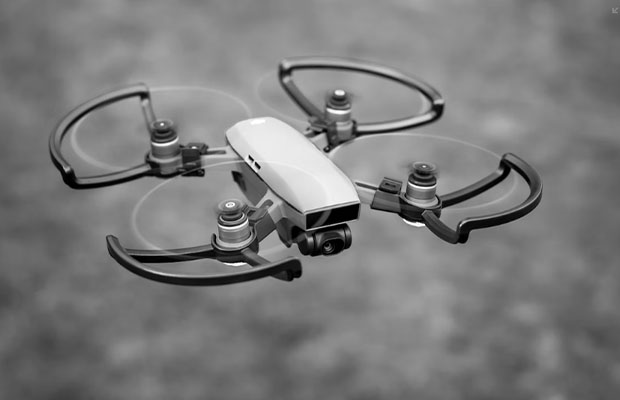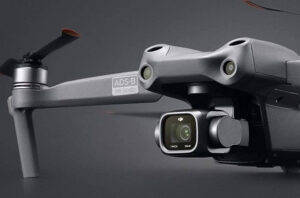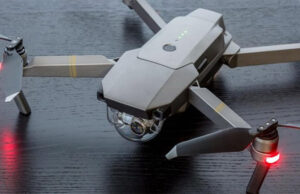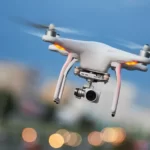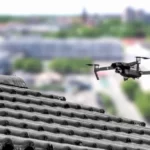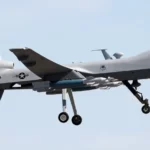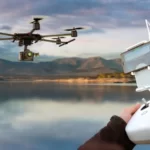What comes to mind when you hear the word “drone”?” Drones are used in many different applications today, including small-item delivery, industrial site inspections, infrastructure monitoring, mapping, crop monitoring, emergency response, and security surveillance.
Here is a quick history of unmanned aerial vehicles, from the first unmanned aircraft to modern DIY drones. Do you know when the first drone was made? The mid-1850s saw the introduction of some of the first military drones.
To better understand how the drone industry evolved to become what it is today, let’s examine the history of drones and the applications for which they have been used.
Table of Contents
What Is A Drone Exactly?
Unmanned aerial vehicles (UAVs) are referred to as “drones” in modern usage. aircraft that can operate without an onboard pilot. The drone industry’s technologies will be divided into two categories for our purposes: drones that require a human operator to guide their missions and autonomous drones, which do not.
Drones have been used for photography, security, safety, and environmental applications since they were first used in the middle of the nineteenth century. However, the drone technologies we use today were made possible by warfare. Military organizations all over the world were among the first to realize the advantages drones could offer to combat strategies and started working to develop the industry.
When Drones Were Invented – the Early Rise of Drone Tech
Can you venture a wild guess as to when drone technology first appeared? Was it the World Wars in the early 1900s?
Well, the history of drones goes back to the early 1800s (impressive, right?). The unmanned aerial vehicle is first mentioned in Austria in 1839. As you might expect, the Austrians’ use of unmanned balloons to obliterate the city of Venice was a military innovation. In order to attack key locations in the city-state of Venice, the explosive-filled balloons were meant to be dropped. As we might expect, the inexperienced technology backfired; many of these explosive-filled balloons blew back to destroy Austrian camps, though some did succeed in striking the intended targets inside Venice. The Austrians undoubtedly developed this ingenious technology, but due to its high failure rate, it was put on hold for many years after the war.
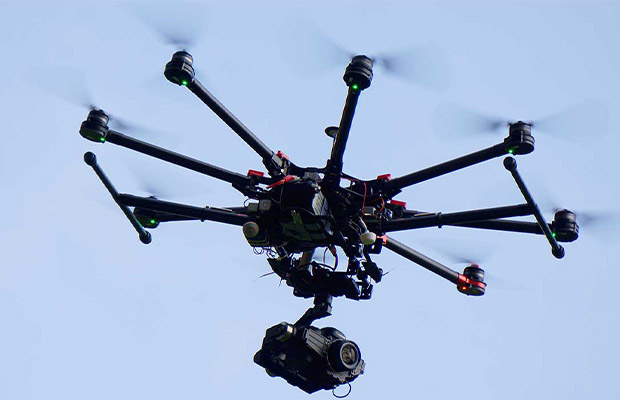
After the Wright Brothers completed their Kitty Hawk flight successfully, many years later, unmanned aircraft began to make a comeback. As the original winged UAV, Ruston Proctor Aerial Target is well-known today. The plane was created using Nicola Tesla’s designs. Radio signals were used to steer the Ruston Proctor Aerial Target plane, an interesting control method that is similar to how drones are now used.
Similar to Austrian flying explosive balloons, the Ruston Proctor Aerial Target aircraft was created by England as a military tool to counter German Zeppelins. The aircraft’s creators also asserted that ground targets were equally effective with it. However, the Ruston Proctor Aerial Target experienced resounding failures, much like Austria’s explosive flying balloons did. As a result, British authorities shelved the project and even went so far as to say that UAVs have no future.
History & Evolutions Of Drone
We will explain the drone revolution in detail.
Some Of The Earliest Military Drones Appeared In The Mid-1850s
Drone technology may have its origins in Austria’s 1849 attack on Venice using unmanned balloons loaded with explosives. Austrian forces, who were besieging Venice at the time, launched around 200 of these incendiary balloons over the city.
Each balloon carried anywhere between 24 (11 kg) to 30 (14 kg) pounds of bombs. Once in position, these bombs were released from their carrier balloons to devastate the city below. Fortunately for the Venetians, only one bomb hit its target because a sudden change in wind direction caused the majority of the balloons to veer off course.
Even though this event used cutting-edge military technology, as we have seen, the use of balloons does not really fit the current definition of drones, especially military drones, as we have seen.
That being said, it is very interesting to see the basic concept of drones was being considered by military technologists more than 170 years ago. In the ensuing centuries and decades, this way of thinking will guide the technological advancement of drones.
One Of The First Quadcopters Appeared In The Early-1900s
The quadcopter configuration is one characteristic shared by many contemporary commercial drones. A precursor to the helicopter, the gyroplane was created in 1907 by brothers Jacques and Louis Bréguet with the assistance of French physiologist Professor Charles Richet.
The copter’s design was futuristic for its time. It only managed to ascend 0.6 meters, but it was the first ascent of a piloted vertical-flight aircraft. As four men were required to stabilize the structure, it was also not a free flight.
However, it did show that the idea of a quadcopter would work for flight; more technological advancement would be required to make it practical.
1915-1920 Saw A Big Leap Forward In The Technology
Moving ahead a little, the first pilotless aircraft was created in 1916, just as World War, I was about to start. Called the Ruston Proctor Aerial Target, these pilotless military drones used a radio guidance system developed by Archibald Low, a British engineer.
Low quickly constructed a pilotless plane with the help of a hand-selected team of about 30 men that was launched with compressed air from the back of a truck (another first). Low and his group developed the first wireless rocket in 1917. Later, during World War II, the Germans would adopt this technology for their V1 rocket program.
The British military did not continue Low’s work after the war, despite the fact that some of his projects were successful and he was known as “the father of radio guidance systems.” While the Germans undoubtedly understood the significance of Low’s work and made two attempts to assassinate him, the British government did not recognize the cutting-edge nature of his work.
The United States soon after. The army built the Kettering Bug, which used gyroscopic controls and was intended to be used as an “aerial torpedo”. Every “Bug” was launched from a four-wheeled dolly that moved along a portable track.
An electrical circuit was closed by a control after a predetermined amount of time, which turned off the engine. Then, the wings were released, causing the Bug to plunge to earth — where its 180 pounds (82 kg) of explosive detonated on impact.
1930-1945 Saw Other Major Leaps Forward In Military Drone Technology
UAV technology advancements did not stop after World War One. During the 1930s, the U.S. The Navy started experimenting with radio-controlled planes, which led to the creation of the Curtiss N2C-2 Drone in 1937.
The British created the “Queen Bee” radio-controlled target drone in 1935, which is thought to be the origin of the term “drone” for radio-controlled unmanned aircraft.
The first mass-produced UAV product in the United States was the remote-controlled model airplane called Radioplane OQ-2, which was created in the 1930s by British actor Reginald Denny and engineer Walter Righter. Nearly 15,000 drones were manufactured for the military during the war.
The inventor of a radio-controlled aircraft that could fly out of sight is actually Edward M. Sorensen, who obtained a patent for a device that tracked an airplane’s movements from a ground station. Early RC aircraft could only fly in the controlling pilot’s line of sight before this advancement.
The development of the German army’s V-1 “Doodlebugs,” however, was the most significant drone-related event of the Second World War. These crafts were essentially the first cruise missiles in history because they were equipped with pulsejets.
To undermine the confidence of the British people, they were employed in a campaign of “terror bombing” in British cities like London. They had a straightforward autopilot controlling their altitude and airspeed, a pair of gyroscopes controlling their yaw and pitch, a magnetic compass maintaining their azimuth, and a barometer controlling their altitude. Using pressurized air, the gyros, rudder, and elevator were all controlled.
The technology was later reverse-engineered by the Americans, who developed their own pulsejet-powered unmanned aerial drones like the TD2D-1 Katydid and Curtiss KD2C.
The Vietnam War Saw The First Use Of Drones With Cameras For Reconnaissance
The next significant development in drone technology happened a few years later, during the Vietnam War. Drones were widely used as specialized reconnaissance UAVs for the first time during this conflict.
In addition, according to the Imperial War Museum, London, “drones also began to be used in a range of new roles, such as acting as decoys in combat, launching missiles against fixed targets, and dropping leaflets for psychological operations.”
In the United States in the late 1950s spy planes, were manned by both spy satellites and the SR-71 Blackbird was still in the development phase.
To safely collect information in combat zones, specialized UAVs were required. Some models did exist, such as the Ryan 147Bs, but in order to recover any information they may have gathered, they had to be piggybacked on C-130s and dropped to the ground in friendly territory.
Many other countries realized the need for drones and started looking into using UAVs for a variety of military purposes. As drone designers concentrated on enhancing endurance and the height at which the drones could safely operate, new drone models became more complex.
Read More: How Much Does a Military Drone Cost?
Recreational Rc Planes Became Big During The 1960s
Radio-controlled components could now be sufficiently miniaturized to be sold to civilian customers at a competitive price thanks to advancements in transistor technology at this time. Due to this, RC plane sales experienced a small boom during this decade.
In-door or outdoor building and flying RC craft became possible for enthusiasts thanks to the introduction of kits for planes. Additionally, a sizable number of clubs for RC aircraft were founded by enthusiasts. As a result, a cottage industry was born, hastening the advancement of commercial RC technology.
Read More: Can You Bring A Drone On A Plane?
Assault Military Drones Were Seriously Beefed Up During 1980-1989
UAVs were frequently regarded as expensive and unreliable even though the U.S. was able to make a breakthrough in the mass manufacturing and supply of drones for the military. This viewpoint was altered in 1982 when Israeli forces defeated the Syrian Air Force using unmanned aircraft with little collateral damage.
As part of its effort to create a low-cost drone for fleet operations, the United States launched the Pioneer UAV Program in 1980. United States joint endeavor and The 1986 invention of the RQ2 Pioneer, a medium-sized reconnaissance aircraft, was made possible by Israel.
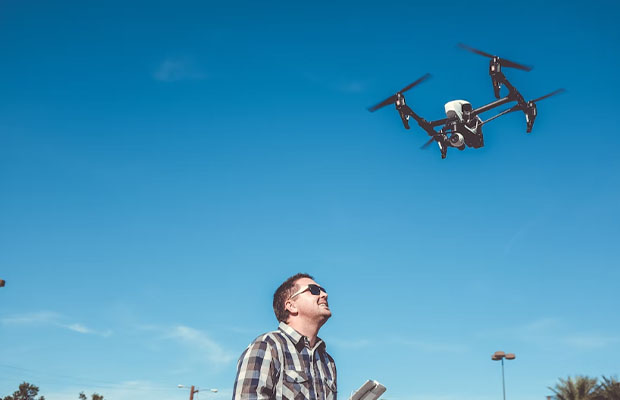
The development of alternative drone power sources started to become a priority for drone manufacturers around this time. Solar energy was one readily apparent source.
1990-2010 Was A Pivotal Period For Military And Civilian Drone Development
Mini and micro versions of UAVs were introduced in 1990, and, the famous Predator drone was introduced in 2000. Both the launch of missiles and the hunt for Osama Bin Laden utilized this in Afghanistan. In the following years, a number of small-sized, fixed-wing surveillance drones such as Raven, Wasp, and Puma were developed by AeroVironment Inc.
Raven is currently used in a number of countries, with tens of thousands of units deployed.
2006 was another pivotal year in the history of drones. The FAA first authorized the use of commercial drones this year.
However, consumer applications took a while to get going, and in the first few years, very few people requested permits.
2010-today Might Just Be The “Golden Age” Of Drones
Drone innovation and commercial interest have skyrocketed over the last ten years or so. Prior to this, drones were mostly used for military operations or by hobbyists. However, starting in the early 2010s, a variety of new uses for drones, such as those for delivery, were proposed.
By the middle of the decade, the FAA was seeing massive growth in demand for drone permits, with around 1000 commercial drone permits issued in 2015.
In the following year, this number tripled, and it has since grown exponentially.
Commercial photography and videography now frequently use drones with cameras. This is the outcome of the fusion of smartphone technology and radio-controlled (RC) aircraft.
The price of microcontrollers, accelerometers, and camera sensors, which are perfect for use in fixed-wing hobby aircraft, has dropped as a result of the rapid increase in smartphone usage. Further advances allowed a drone with 4 or more rotors to be controlled by adjusting the speed of individual rotors.
The ability to use multirotor aircraft in a variety of ways was made possible by increasing their stability.
The use of DIY drones is also becoming more popular. DIY drones may be used for surveillance by police and fire departments due to their portability and compact size.
2020-2021: Drones Help In The Pandemic
Throughout the coronavirus outbreak, drones have been a mainstay in medical supply deliveries, police work in social distancing, and quarantine.
Firefighters use drones to locate entry points into buildings without putting themselves in danger, while police use them to maintain social distance.
The Success Of Commercial Drones
Enterprises were hesitant to scale their drone programs, even as the consumer drone market exploded and drove down the cost of drone technology. Investment risk was thought to be too high due to the uncertainty surrounding the FAA’s long-term rules for commercial use and their implications.
In the nearly ten years prior to the first US congressional hearing on the subject in 2015, only 13 permits had been approved.
All of that changed in the fall of 2016, when the historic Part 107 rule unambiguously outlined conditions for commercial operations in the US, essentially opening the skies to commerce. Soon after, the FAA started issuing tens of thousands of drone permits annually.
Part 107 does not apply to all operations. Instead, individuals or businesses must apply for a waiver. Waivers are not always accepted, and the waiver process can take months to complete. Regulation, therefore, continues to be a barrier to modern commercial operations. The UK, EU, and Australia, among other countries, all have laws that are similar.
The first two major commercial drone use markets were on industrial and agricultural sites. Crop management and inspection tasks were handled by drones. Because of the agricultural market’s narrow profit margins, other sectors have since adopted drone delivery technology more quickly, including utilities, renewable energy, mining, port, and sea terminals.
The drone inspection market has also experienced significant growth. The cost of inspections for confined spaces (examples include oil and gas, power generation, mining, chemicals, marine vessels, and others) was $795.12 million in 2019 and is anticipated to rise to $1,936.32 million by 2027.
This development has been aided in part by the United States aviation regulators’ approval of the first fully automated commercial drone flights in 2021. This meant that authorized businesses could operate drones off-site, unattended, and unattended without any controls or monitoring.
Drone Industry’s Future
Drone technology appears to have a very bright future. Over the following few years, the drone market will likely experience significant growth, according to Gartner.
Business Insider, for example, expects global shipments of drones to rise to 2.4 million by 2023 — that is a 66.8% compound annual growth rate.
“The four primary enterprise industry segments will see drone growth, including A spokesperson for Business Insider cited “agriculture, construction and mining, insurance, and media and telecommunications.
Drones are anticipated to get lighter and smaller for military applications, with much longer flight times and battery life. Additionally, improvements will be made to further enhance the capabilities of drones, including their optics. In the civilian market, advances in flight time improvement are enabling them to act as delivery platforms, for use in emergency services, and for data collection in a number of areas too risky for humans, such as in power plants or fires.
Additionally, in some nations, drones have been used to manage crowds and secure homes. Authorities in some areas are likely to keep using drones for this kind of surveillance, which is a worrying development.
Read More:
- Real Estate Drone Photography
- How To Use Drones In Agriculture?
- Drone Delivery: The Future Of Logistics?
The future of drones is also likely to be greatly influenced by miniaturization. Drones will become significantly smaller as parts get smaller and smaller.
It is not improbable that military and commercial/industrial applications for micro-drones will become commonplace in the not-too-distant future. similar to the recently purchased pocket-sized drones by the United States. Army.
Despite the enormous potential for drones to be used as weapons, a number of organizations have questioned the morality of this kind of remote weaponry given the risk that mistakes could result in civilian casualties due to incomplete data.
Take Away
Drones have a promising future as more industries adopt them and businesses find more use cases for them that add value. The development of technology has accelerated tremendously in recent years, as demonstrated by this history of drones, making predictions about the future of society in the next 20 to 50 years nearly impossible.
Other Posts You Might Like: How Much Weight Can A Drone Carry?
